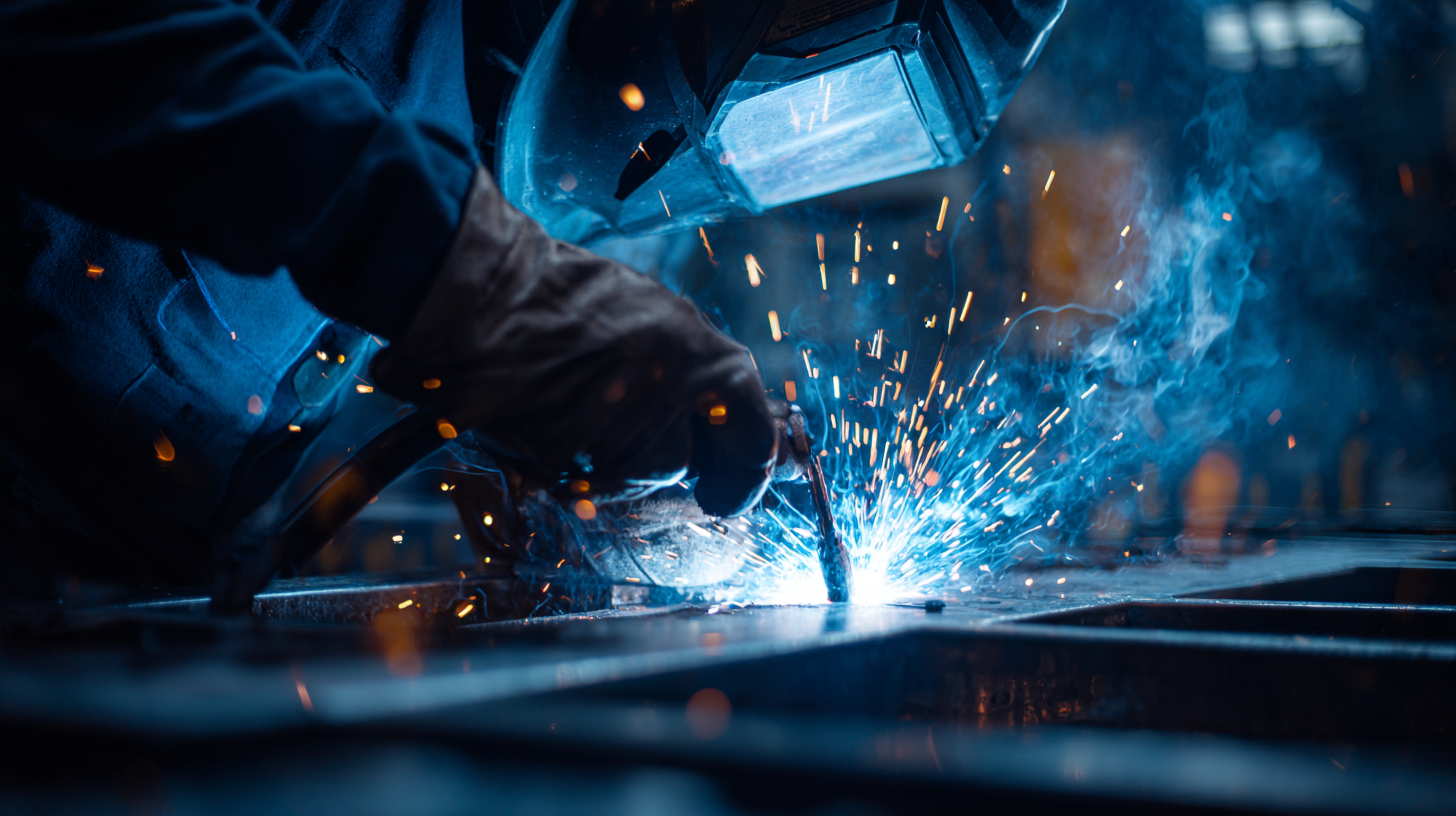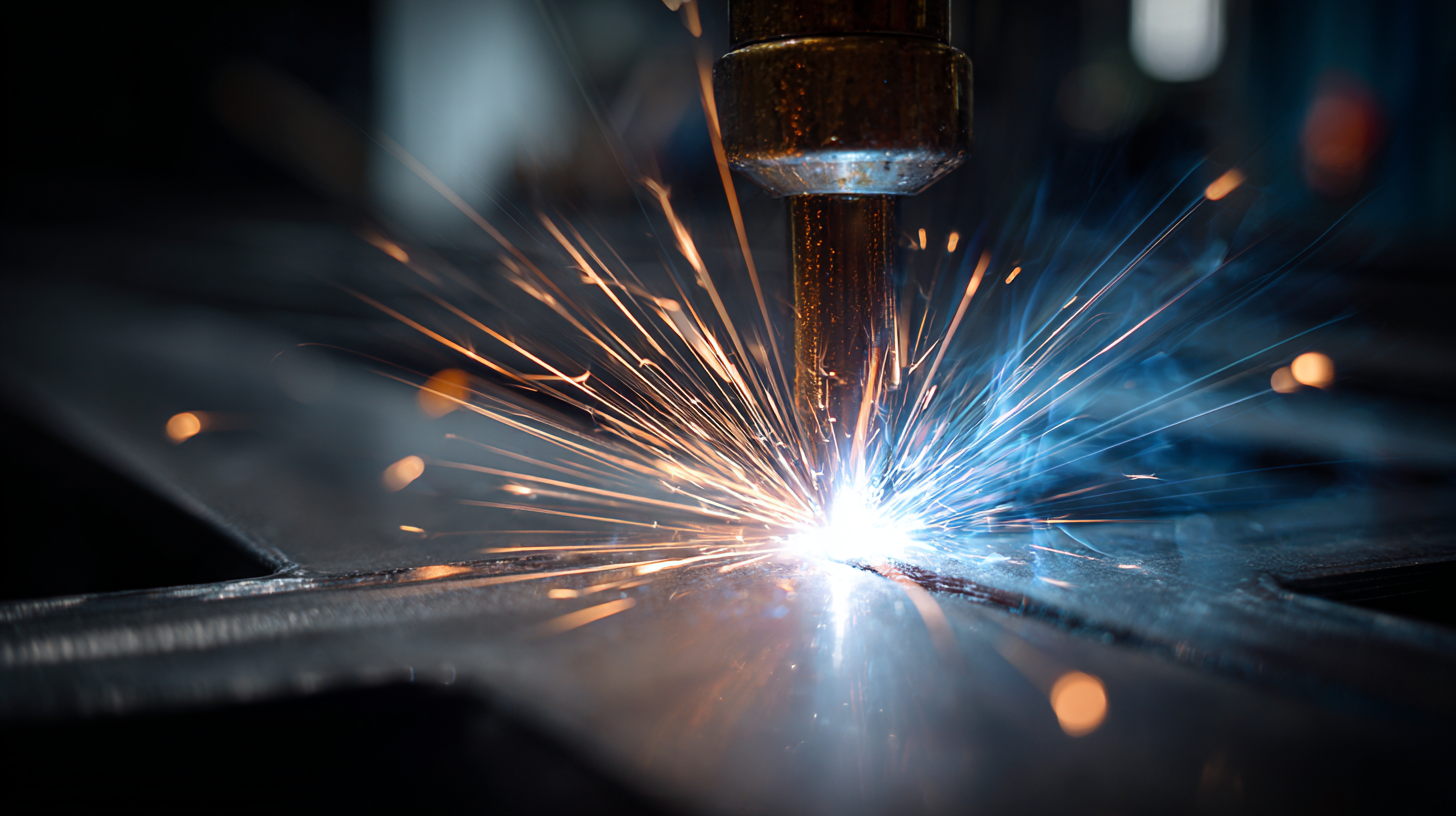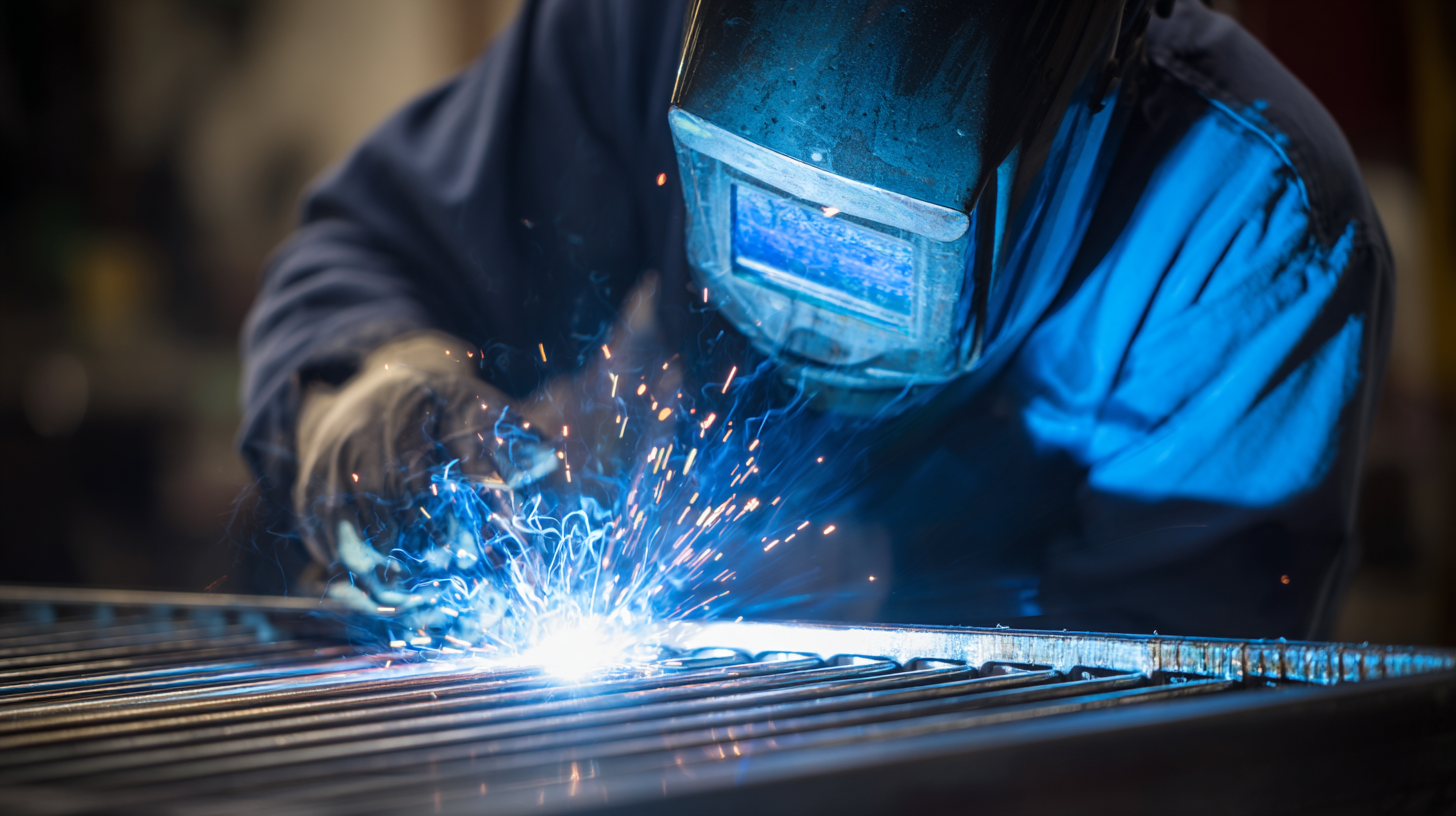How to Maximize Efficiency in Wire Weld Processes for Optimal Production
Table of Contents
- Strategies for Streamlining Wire Weld Setup and Changeover Times
- Leveraging Automation and Robotics to Enhance Weld Efficiency
- Implementing Quality Control Measures to Reduce Rework Rates
- Optimizing Material Selection for Improved Weld Performance
- Training and Workforce Development for Advanced Weld Techniques
- FAQS
- Conclusion
- Related Posts
When it comes to the competitive world of welding production, getting the wire weld processes running smoothly and efficiently can really make a difference in the overall output. I recently came across an industry report from the Global Welding Consumables Market, and it mentioned that the demand for welding consumables—like wire welding tech—is expected to grow at about 5.2% annually from 2021 to 2026. At Wenzhou Tianyu Electronic Co., Ltd., we've been in the game since 2000, specializing in welding electrodes and consumables for over two decades. We totally get that boosting wire weld efficiency not only helps cut down production costs but also boosts the quality of the final product. Whether it’s stainless steel welding electrodes or low alloy options, we're all about providing innovative solutions that adapt to the changing needs of the industry. Our goal is to make sure our clients stay ahead in this fast-paced, competitive market.

Strategies for Streamlining Wire Weld Setup and Changeover Times
In the fast-paced world of wire welding, cutting down on setup and changeover times is a big deal if you want to keep productivity high. One pretty effective trick is to go for advanced inverter-style welders. These machines are pretty versatile—they let you weld different materials like aluminum and steel without much hassle. When you’re using equipment that's designed to be efficient, your team can jump between different jobs quicker, saving a lot of time and keeping things moving smoothly on the shop floor.
On top of that, having standard operating procedures in place really helps speed things up even more. Making sure your crew is well-trained on these procedures means everyone knows exactly what to do when it’s time to change tasks. Plus, using tech tools that can monitor and tweak welding settings on the fly takes out the guesswork. This way, you can switch between production runs faster and more confidently. Overall, streamlining these steps doesn’t just save time; it also boosts your quality and helps your shop stay competitive in today’s busy manufacturing scene.
How to Maximize Efficiency in Wire Weld Processes for Optimal Production - Strategies for Streamlining Wire Weld Setup and Changeover Times
| Process Stage | Average Time (minutes) | Optimization Strategy | Expected Efficiency Gain (%) |
|---|---|---|---|
| Setup Preparation | 15 | Standardize Tooling and Materials | 20 |
| Wire Loading | 10 | Implement Quick-Release Features | 25 |
| Calibration | 8 | Automate Measurement Systems | 30 |
| Weld Execution | 25 | Real-Time Monitoring | 15 |
| Post-Weld Inspection | 12 | Use Non-Destructive Testing (NDT) | 10 |
| Changeover Time | 20 | Standard Operating Procedures (SOPs) | 15 |
Leveraging Automation and Robotics to Enhance Weld Efficiency
These days, with how competitive the manufacturing world is, it's pretty much essential to bring automation and robotics into wire welding processes if you want to stay ahead. I read in a recent report from the American Welding Society that using automated welding systems can boost productivity by around 30% compared to sticking with manual methods. That’s a huge difference! Not only does it speed things up, but it also helps make sure the welds are consistent and of good quality, which means fewer defects and less rework down the line.
Plus, robots in welding setups can cut labor costs by up to 25%. They can run non-stop with hardly any downtime — which is a total game-changer for high-volume production. And it gets even more exciting — with AI thrown into the mix, these robotic systems can make real-time tweaks and improvements to the process. That’s why companies using robotic automation often see cycle times cut in half, which really shows how much tech is transforming the way we do wire welding.
Implementing Quality Control Measures to Reduce Rework Rates
In the world of welding production, staying on top of quality control is absolutely crucial if you want to cut down on rework and keep things running smoothly. Here at Wenzhou Tianyu Electronic Co., Ltd., we're all about aiming for the best—so we make sure to include thorough quality checks throughout the entire process of welding wire. By sticking to these standards, we're not just protecting the quality of our stainless steel and carbon steel welding electrodes; we’re also boosting the dependability of our welding consumables, which is a big deal.

If you're trying to fine-tune your production line, here are a few tips that might help. First off, set clear inspection criteria for each step of the welding process. Keep an eye on things like heat input, electrode quality, and arc stability—these small details can really make a difference in preventing defects. Next, don’t underestimate the power of good training. Help your team understand why quality matters, and they’ll be better equipped to catch issues early before they turn into expensive rework. And lastly, investing in cutting-edge welding equipment and tech? Totally worth it. It can help keep your performance consistent and make inspections easier, so every piece that leaves your shop hits the high standards you’re aiming for before it hits the market.
Optimizing Material Selection for Improved Weld Performance
When it comes to wire welding, picking the right materials can make a huge difference in how well your welds turn out. The kind of wire you choose directly impacts both the strength and overall quality of the welds. The American Welding Society (AWS) points out that using good-quality welding wire can bump up weld joint strength by as much as 30%. So, going for the right wire—whether it's stainless steel, carbon steel, or an alloy—really matters because it needs to be compatible with the base metals. That’s what helps you get strong, long-lasting welds.
Plus, things like wire diameter and coating aren’t just details—they actually have a big impact. A recent report from the Welding Research Council mentions that choosing the right wire diameter can cut heat input by around 15%, which in turn helps reduce distortion in the welded parts. And let’s not forget about coatings—they influence arc stability and spatter, both super important for a smooth, efficient weld. Using wires with the proper coatings can actually boost production rates and cut down rework time by about 25%. All in all, these small tweaks can really save money and improve efficiency in manufacturing plants.
Maximizing Efficiency in Wire Weld Processes
Training and Workforce Development for Advanced Weld Techniques
As the demand for more advanced welding technology keeps rising, it’s become pretty clear that investing in training and developing workers is absolutely essential if we want to boost manufacturing efficiency. You know, initiatives like the Indian Institute of Skills—launched by Prime Minister Shri Narendra Modi—are really aiming to gear up fresh graduates with the skills they need to keep up with industry changes, especially in welding. It’s a smart move, honestly, because industry projections suggest the welding equipment market could hit around USD 2.5 billion by 2034, just in Latin America alone. That's huge!

Now, to really get the most out of wire welding processes, companies should focus on comprehensive training programs that use the latest methods—think virtual reality and other tech tools. Studies have shown that VR-based courses can seriously boost learning outcomes, making it a pretty awesome way to train technicians who’ll handle some pretty complex welding tasks. Giving new folks hands-on experience in a safe, controlled setting helps prepare them to become key players in their teams.
Here are a few tips to boost workforce development:
- Use tech smartly: Incorporate VR training to create immersive experiences that help employees really grasp and remember their skills.
- Team up with schools: Work with universities and technical colleges to create curricula that match current industry needs and tech advancements.
- Keep learning going: Promote a culture where employees are encouraged to keep upgrading their skills, so they stay competitive as things move fast.
All in all, investing in such strategies isn’t just good for companies—it’s essential for keeping up with the fast-changing landscape of manufacturing and welding technology.
FAQS
: Adopting advanced inverter-style welders can greatly reduce setup and changeover times by allowing quick switches between different welding tasks without extensive recalibration.
Implementing standardized operating procedures and training staff ensures everyone is familiar with the equipment and techniques, facilitating quicker changeovers.
Technology solutions that monitor and adjust welding parameters in real time can eliminate guesswork and lead to faster transitions between different production runs.
Integrating automation and robotics can increase productivity by up to 30% compared to manual methods, enhancing weld quality and consistency while reducing defects.
The use of robotic systems can reduce labor costs by up to 25% as they can operate continuously with minimal downtime, which is crucial in high-volume production.
Choosing high-quality welding wire can increase weld joint strength by up to 30%, and selecting the right wire material ensures compatibility with base metals for strong, durable welds.
An optimized wire diameter can reduce heat input by 15%, minimizing distortion in welded components and improving overall efficiency.
The choice of wire coating affects arc stability and spatter, helping to enhance production rates and reduce rework times by 25%, leading to lower operational costs.
Artificial intelligence allows for real-time adjustments and optimizations in welding robotics, further improving process efficiency and reducing cycle times.
The right wire material ensures compatibility with base metals, which is vital for achieving strong, durable welds and enhancing overall production efficiency.
Conclusion
In today’s manufacturing world, getting the most out of your Wire Weld processes is more important than ever if you want to hit those production goals. Finding smarter ways to cut down on setup and changeover times can really help things flow more smoothly. Plus, bringing in automation and robotics? That’s a game-changer—less manual errors, more accuracy, and overall better efficiency. It’s also a good idea to have solid quality control in place; it means less rework and happier customers. Don’t forget, choosing the right materials can make a big difference in the quality of your welds too.
Of course, training your team and helping them stay up-to-date with new welding techniques is key—after all, the industry keeps evolving, and you wanna stay ahead of the game. At Wenzhou Tianyu Electronic Co., Ltd., we’ve been in the game for over 22 years, making high-quality welding electrodes and consumables. We’re here to support manufacturers in tackling these challenges. By focusing on these areas, companies can really boost their Wire Weld processes, ramp up productivity, and keep their quality standards high—even when things get busy.
Related Posts
-

Unlocking the Future of Best Welding Brass With Tig Strategies for Global Buyers in 2025
-

Elevate Your Welding Standards with E81T-Ni1: Quality Chinese Manufacturing for Global Markets
-

Choosing the Right Welding Electrode Type According to Industry Standards
-

Exploring the Advantages and Applications of the Top Welding Electrode Types
-

Evaluating the Performance of Nickel 55 Welding Rods: A Comparative Analysis with Alternative Alloys
-

How Chinese Manufacturing Thrives Amid US China Tariff Equality with the Best Wire Electrode Innovation
Blog Tags:

